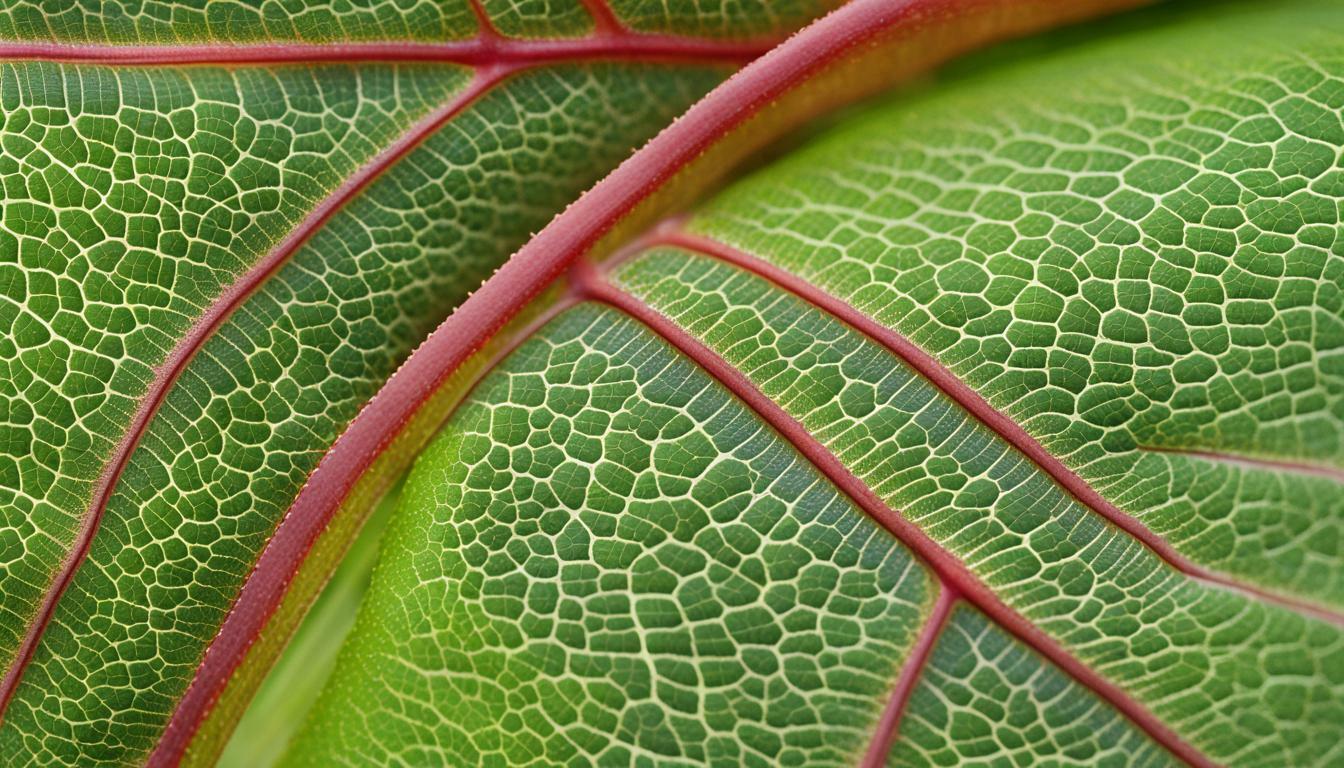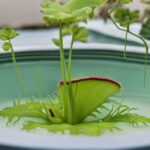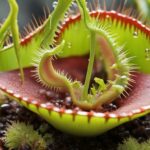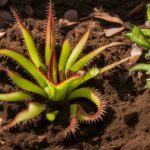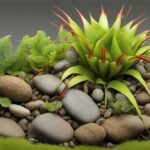If you’re considering adding a Venus flytrap to your collection of carnivorous plants, you may be wondering how long these fascinating creatures tend to live. The answer is, like many living things, the lifespan of a Venus flytrap can vary depending on a variety of factors.
In this article, we’ll take a closer look at what you can expect when it comes to the lifespan of a Venus flytrap, including the various stages of their lifecycle, factors that can influence their lifespan, and tips for extending their life expectancy.
Key Takeaways:
- Venus flytraps can live anywhere from a few years to over a decade, depending on the care they receive and environmental conditions.
- Proper care, including the right soil, watering, temperature, and humidity, can help extend the lifespan of a Venus flytrap.
- Common misconceptions about Venus flytrap lifespan include the belief that they only live for a few months or need to be constantly fed insects to survive.
Understanding the Venus Flytrap Lifecycle
Before delving into the details of the lifespan of Venus flytraps, it’s important to understand their lifecycle. Venus flytraps are perennial plants that grow in wetlands and bogs in the southeastern United States.
These carnivorous plants begin their life as small seeds, which can take several months to germinate. After germinating, the plant goes through a period of growth where it produces small leaves and new growth points.
As the Venus flytrap matures, it develops its distinctive trap leaves, which can sense the presence of prey. When an insect or other small creature triggers the hairs inside the trap, the leaves snap shut, trapping the prey inside.
Reproduction
Venus flytraps can also reproduce through flowering. In the spring, the plant produces a tall stalk that holds clusters of small white flowers. These flowers can be pollinated by visiting insects, and once pollinated, the plant produces small black seeds.
It’s important to note that while Venus flytraps can be grown from seed, it can take several years for the plant to reach maturity and produce traps.
Venus Flytrap Facts and Information
If you’re considering adding a Venus flytrap to your collection, it’s important to know that these plants have specific care requirements. They need a humid environment, plenty of bright, indirect sunlight, and well-draining soil that is kept moist but not waterlogged.
Venus flytraps also require a source of prey, such as live insects or dried mealworms. While feeding your Venus flytrap can be a fascinating process, it’s important not to overfeed the plant or use prey that is too large. Overfeeding can cause the plant to use up too much energy, which can lead to a shorter lifespan.
With the proper care and attention, a Venus flytrap can live for several years. However, it’s important to note that these plants are sensitive to changes in their environment and can be susceptible to pests and diseases if not cared for properly.
Factors Affecting the Lifespan of a Venus Flytrap
The lifespan of a Venus flytrap can vary, but with the right care and attention, you can extend its life expectancy. Here are some factors that can influence the lifespan of your Venus flytrap:
| Factors | Details |
|---|---|
| Proper Care | One of the most significant factors that affect the lifespan of a Venus flytrap is proper care. Ensure you provide your plant with the appropriate soil, moisture level, light exposure, and temperature conditions. Overfeeding or underfeeding your Venus flytrap can shorten its lifespan, so it is essential to avoid overfeeding by providing 2-3 insects per month. |
| Environmental Conditions | Venus flytraps are native to sub-tropical regions, so they require the right conditions to thrive. High humidity, warm temperatures, and plenty of sunlight are critical to maintaining your plant’s optimal health. Don’t expose your Venus flytrap to extreme temperatures, and avoid placing it in drafty areas as this can cause damage to your plant. |
| Threats | Your Venus flytrap may encounter several threats that can impact its lifespan, such as insects, animals, and fungal infections. Keep your plant free from bugs and pests by removing any debris or dead insects regularly. Avoid touching the plant’s leaves, as this can cause it to close its trap and reduce its lifespan. |
By providing the right care and attention to your Venus flytrap, you can extend its lifespan in captivity. Keep in mind that Venus flytraps have a lifespan of three to five years, but with proper care, you may be able to enjoy your plant for an extended period.
Extending the Lifespan of a Venus Flytrap
Venus flytraps are fascinating plants that can thrive for several years if given proper care, making them a great addition to any indoor or outdoor garden. But how can you ensure your Venus flytrap lives a long and healthy life in captivity? Here are some tips to help extend the lifespan of your Venus flytrap:
Watering
One of the most important factors in keeping your Venus flytrap healthy is proper watering. Venus flytraps require a consistent level of moisture, but over-watering can be detrimental to their lifespan. It is best to water your Venus flytrap with distilled water or rainwater rather than tap water, as tap water contains minerals that can cause harm. In general, your Venus flytrap requires about an inch of water per week.
Soil Conditions
Your Venus flytrap requires acidic soil with a pH range of 4 to 5. You can achieve this by using a soil mixture of sand and sphagnum moss. Be sure to avoid any fertilizers or additives, as this can be harmful to your plant’s lifespan.
Temperature and Humidity
Venus flytraps thrive in warm, humid environments, ideally between 70 and 85 degrees Fahrenheit. If you live in a dry or arid climate, you can use a humidifier or a tray of water near your plant to maintain the necessary humidity levels. In colder climates, you can place your plant in a terrarium or greenhouse to maintain the right temperature.
Avoid Stress
Venus flytraps are sensitive plants and can easily become stressed if disturbed. Avoid touching or triggering their traps unnecessarily, as this can cause damage and shorten their lifespan. Additionally, avoid exposing your Venus flytrap to excessive light or wind, which can also cause stress.
By following these tips, you can extend the lifespan of your Venus flytrap and enjoy its unique beauty and carnivorous abilities for years to come.
Common Misconceptions about Venus Flytrap Lifespan
There are several common myths about the lifespan of Venus flytraps that are simply not true. It’s important to understand the facts to ensure you provide the proper care for your plant.
- Venus flytraps only live for a few months. While some sources may state that Venus flytraps only live for a few months, this is not accurate. When provided with the proper care, Venus flytraps can live for several years.
- Venus flytraps require live insects to survive. While Venus flytraps are carnivorous, they do not require live insects to survive. They can also be fed with freeze-dried insects or even small pieces of meat.
- Venus flytraps are easy to grow. While Venus flytraps are fascinating plants, they can be tricky to grow. They require specific soil conditions, proper watering, and the right amount of sunlight and humidity to thrive.
By understanding the truth behind these misconceptions, you can provide the best care for your Venus flytrap and ensure a long and healthy lifespan.
Conclusion
In conclusion, the lifespan of a Venus flytrap can vary depending on various factors, including care, environmental conditions, and potential threats. Understanding the different stages of a Venus flytrap’s lifecycle, along with providing proper care, can significantly increase its lifespan. Remember to water your Venus flytrap with distilled water, maintain the right soil conditions, and ensure it is exposed to enough sunlight and the right temperature and humidity levels.
Extend the Lifespan of Your Venus Flytrap
To extend the lifespan of your Venus flytrap and keep it healthy, it is essential to look after it carefully. Providing the right care, water, and nutrients will help keep it alive and thriving for years to come. Remember to avoid feeding it insects with excessive frequency, as this can damage the plant’s roots. By keeping your Venus flytrap in the right conditions, you can enjoy watching it grow and mature over time.
With a little bit of patience, care, and attention, you can help your Venus flytrap to live a long and healthy life. We hope this article has provided useful information on how to increase the lifespan of your Venus flytrap and debunked any myths or misunderstandings. Remember to take good care of your plant so you can continue to enjoy its unique and fascinating growth and behavior.
Can Overwatering Shorten the Lifespan of a Venus Flytrap?
Overwatering a Venus Flytrap can lead to detrimental effects and potentially shorten its lifespan. Signs of overwatering a venus flytrap include yellowing or browning of leaves, mushy or drooping traps, and root rot. Carefully monitoring the watering schedule and ensuring proper drainage is crucial to maintain the health and longevity of these fascinating plants.
FAQ
Q: What is the lifespan of a Venus flytrap?
A: The average lifespan of a Venus flytrap is around 20 years, with proper care and maintenance. However, some can live up to 30 years or more in ideal conditions.
Q: What are the different stages of a Venus flytrap’s lifecycle?
A: A Venus flytrap goes through three main stages in its lifecycle: the seedling stage, where it develops from a seed into a small plant; the juvenile stage, characterized by rapid growth and the development of traps; and the adult stage, where it reaches its full size and can produce flowers and seeds.
Q: What factors can affect the lifespan of a Venus flytrap?
A: The lifespan of a Venus flytrap can be influenced by various factors, including proper care and maintenance, environmental conditions such as temperature and humidity, and potential threats like pests or diseases.
Q: How can I extend the lifespan of a Venus flytrap?
A: To extend the lifespan of a Venus flytrap, it is important to provide proper care. This includes watering it with distilled or rainwater, providing well-draining soil, maintaining the right temperature and humidity levels, and protecting it from potential threats like pests or extreme weather conditions.
Q: What are some common misconceptions about Venus flytrap lifespan?
A: One common misconception is that Venus flytraps have a short lifespan. While they may die prematurely if not properly cared for, with the right conditions and care, they can live for several decades. Another misconception is that they need to be fed insects regularly to survive, but they can thrive without frequent feeding.

